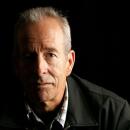Jerry Lee Lewis a ball of promotional fire with new book, albums
“Last man standing!” said the 79-year-old Jerry Lee Lewis with a hearty laugh, speaking by phone from Manhattan.
A founder of rock ‘n’ roll, Lewis is indeed last of the many luminaries discovered by Sun Records founder Sam Phillips, which included Elvis Presley, Johnny Cash, Howlin’ Wolf and many others. Lewis had come to New York for a round of appearances paired with a new book, “Jerry Lee Lewis: His Own Story,” and an album, “Rock & Roll Time.” Standing? Lewis is a man still on the move.
Last week, he sat in with Paul Shaffer’s band on “Late Night With David Letterman” for a quick rendition of his 1957 hit “Great Balls of Fire,” and he’s the only member of the Rock and Roll Hall of Fame’s first class of inductees in 1986 recording and touring with any regularity.
Phillips once famously described Lewis as “One of the most talented human beings to walk on God’s Earth.” Veteran drummer Jim Keltner, co-producer of Lewis’ two most recent albums, recalled this week that “I was with John [Lennon] the night Jerry Lee came to L.A. in 1973 to play at the Roxy. When they were finished with the show, we went back and John got down on his hands and knees and kissed his boots. He’s worshipped by the music community.”
The new album boasts another strong collection of songs, with vintage rock, blues and country numbers intermingled with several more obscure choices, including a little-heard Bob Dylan song dating to around 1978, “Stepchild,” and the spirited title track, written by Kris Kristofferson, James Joseph McGuinn and Bob Neuwirth.
Guests include the Rolling Stones’ Keith Richards and Ron Wood, Neil Young, the Band’s Robbie Robertson and Doyle Bramhall II. Some sessions date back several years — producer-instrumentalist Daniel Lanois, multi-instrumentalist Jon Brion and alt-country singer-songwriter Shelby Lynne.
------------
For the Record
Nov. 4, 3:25 p.m.: An earlier version of this article referred to “the late” Doyle Bramhall. The musician on Lewis’ album is Bramhall’s son, Doyle Bramhall II.
------------
But the album is clearly and authoritatively Lewis’ show. His voice is strong, his piano playing as colorfully inventive as ever. “The voice is all right, the hands are all right and,” Lewis said, adding with a devilish chuckle, “the money is all right. So I’m having a good time.”
Lewis’ life story is the stuff of which movies are made, and one was — “Great Balls of Fire!” starring Dennis Quaid in 1989 — but even that failed to convey the true ferocity of Lewis’ life and music. Biographer Rick Bragg has become the latest to try to do justice to the incendiary musician known both as “The Ferriday Fireball” and “The Killer” in the new book, “Jerry Lee Lewis: His Own Story,” published last week (HarperCollins, $27.99).
Nick Tosches’ 1982 biography “Hellfire” captured the manic spirit of its subject — Rolling Stone called it “the best rock ‘n’ roll biography ever written” — but Bragg’s book, covering more expansive biographical information, is collecting laudatory reviews as well.
“It’s fantastic,” said Lewis. “Everything in it come straight outta my mouth.”
One notable moment draws a clear contrast between Presley and Lewis, who both turned 21 in 1956 and soon thereafter received draft notices. Presley dutifully reported and enlisted in the Army as a regular soldier in 1957 — a move that helped change the public perception of Presley from the threat to the morals of American youth into a proper young role model. Lewis, far less concerned about public perception, reacted differently.
“I wadded it up and threw it in the Black River,” Lewis tells Bragg.
He’s been married seven times, and along the way two wives and two sons died. Lewis made international headlines in 1976 when he was arrested at the gates of Presley’s Graceland mansion in Memphis in the middle of the night for brandishing a pistol and demanding to see his former label mate.
When Presley enlisted, Lewis seemed poised to inherit the crown of rock ‘n’ roll royalty. But when Lewis married his 13-year-old first cousin — not uncommon in the region of Louisiana where Lewis grew up — DJs stopped playing his records and promoters stopped booking his concerts.
His career was over — but not for long. He reemerged in the 1960s in country music. Soon he was scoring hit after hit with distinctive songs such as “What’s Made Milwaukee Famous (Has Made a Loser Out of Me),” “She Even Woke Me Up to Say Goodbye” and “Middle Age Crazy.”
That’s the era spotlighted in another new Lewis CD, which includes recordings he made in the ‘70s with producer Knox Phillips — Sam’s son — that were never issued. “The Knox Phillips Sessions: The Unreleased Recordings” allowed Lewis, after his contract ended with Mercury Records, to delve into old-time gospel, country and even contemporary folk-pop (with a version of Jim Croce’s “Bad, Bad Leroy Brown”) unrestrained by considerations of what might fly with radio programmers.
Although he no longer leaps atop the lid of his piano when performing, occasionally, he’ll still defiantly kick over a piano bench as he stands to hammer the keys with his hands, elbows or, now and then, his backside.
Does it surprise him that he’s rocking and rolling in his eighth decade?
With a tone of genuine humility, a quality that once never would have been expected from the Killer, he said, “It surprises me every time I get to go onstage and do my job.”
Twitter: @RandyLewis2
More to Read
The biggest entertainment stories
Get our big stories about Hollywood, film, television, music, arts, culture and more right in your inbox as soon as they publish.
You may occasionally receive promotional content from the Los Angeles Times.









